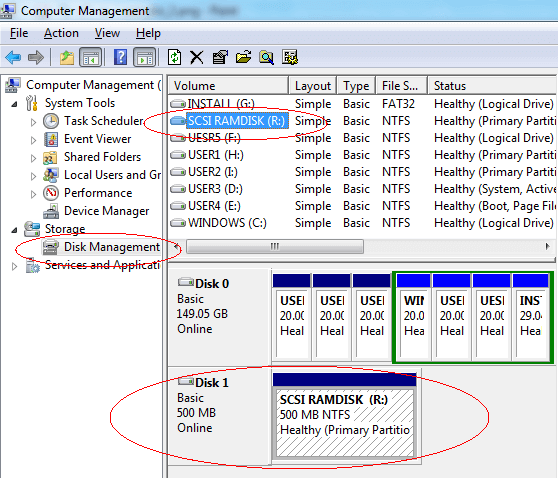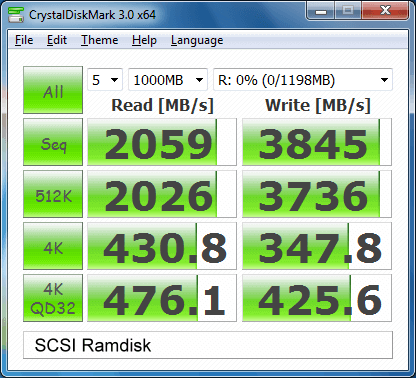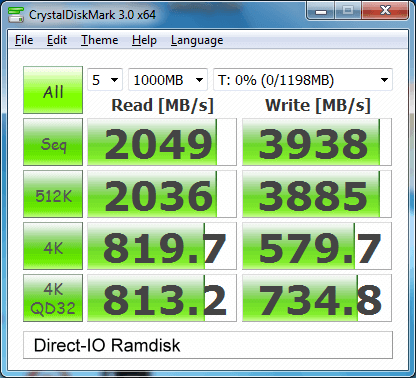A SCSI disk is subject to the SCSI specification and works like a real physical hard disk. It can be recognized by the Windows Disk Management and almost all other third-party disk management utilities.
A Direct-IO disk is designed for better performance. It uses the direct I/O method to access data and consequently reduces a lot of internal system transfer and process time. Thus it shows better performance than a SCSI disk. The shortage of a Direct-IO disk is that it is treated as a logical disk by Windows OS. So it may not be visible to some disk management utilities.
The following figures show the difference between these two virtual disk types. Drive R is a SCSI RAM disk while drive T is a Direct-IO RAM disk. They are both visible to Windows Explorer. However only drive R is visible in Windows Disk Management.


Although drive T (Direct-IO disk) is not recognized as a physical disk, it has better access performance than drive R (SCSI disk), especially on accessing small files.

